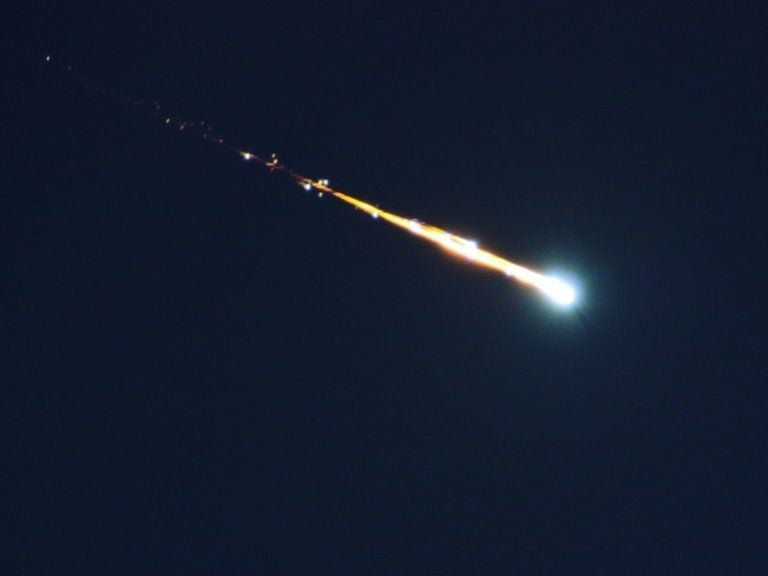Fireball that streaked across sky ‘lit up the whole beach,’ eyewitness says
As of 1 p.m. on Thursday, more than 360 spotters reported seeing a fireball across portions of the Mid-Atlantic and Northeast.

NASA stock image.
If you saw a vivid object race across the Atlantic Ocean on Wednesday evening, you’re not alone.
As of 1 p.m. on Thursday, more than 360 spotters reported seeing a fireball across portions of the Mid-Atlantic and Northeast, possibly originating over the water southeast of Montauk, New York and racing toward Connecticut, according to a reporting log on the American Meteor Society website.
Sara Lang Feinstein tells Jersey Shore Hurricane News that she spotted the fireball in South Seaside Park.
“We were sitting on our deck facing the ocean, and at 11 p.m., we saw the most amazing thing ever,” she said. “It was a bright white flash and then a yellow/green trail. It was right over the ocean and giant.”
In Barnegat Light, “Mike D,” who reported the event on the American Meteor Society website, said the fireball “lit up the whole beach.”
It was spotted from North Carolina to Maine.
A fireball is another term for a very bright meteor, according to an explainer on the American Meteor Society website.
The International Meteor Organization says fireballs occur daily. “To the individual though, they are a rare spectacle that is witnessed very few times per lifetime,” according to the organization’s website.
More from the International Meteor Organization:
A great majority of the material orbiting in outer space are tiny sub-millimeter sized bits of stone, ice, or metal, or a combination of these materials. These are known as micrometeoroids or simply space dust. These tiny fragments cannot produce enough light to be seen when encountering the atmosphere and yet they contribute many tons of material to the Earth’s weight each year. As the size of these objects approach a millimeter, they begin to produce enough light to be seen upon entry to the upper atmosphere as ordinary meteors. Due to the velocity at which they strike the Earth’s atmosphere, fragments larger than 1 millimeter have the capability to produce a bright flash as they streak through the heavens above. These bright meteors are what we call fireballs and they often strike fear and awe for those who witness them.
From 22,300 miles in space, NOAA’s #GOES16 caught the blue/white flash of a fireball, streaking across the skies just east of #LongIsland, last night. #meteor @amsmeteors pic.twitter.com/Ojjhi3qHQZ
— NOAA Satellites PA (@NOAASatellitePA) July 25, 2019
WHYY is your source for fact-based, in-depth journalism and information. As a nonprofit organization, we rely on financial support from readers like you. Please give today.




